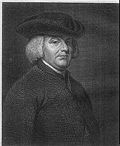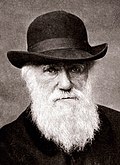Watchmaker analogy
The Watchmaker analogy is a teleological argument. In simple terms, it states that because there is a design, there must be a designer. The analogy is important in natural theology where it is used to show the existence of God as well as supporting the idea of intelligent design. William Paley (1743 – 1805) gave one of the best known explanations for this in his book Natural Theology, published in 1802: "Anyone finding a pocket watch in a field will recognise that it was designed intelligently; living beings are similarly complex, and must be the work of an intelligent designer". In 1859, Charles Darwin provided another explanation for this complexity; according to Darwin, this complexity is a result of continuing adaptation. Paley was not the first to use the analogy, though. Bernard le Bovier de Fontenelle is generally credited for this, when he used it in his work Conversations on the Plurality of Worlds, published in 1686.
There are three main points of criticism against the Watchmaker analogy:
- Complexity does not necessarily require a designer; it can also come from mindless natural processes. David Hume gives the examples of a snowflake, and of the generation of crystals. These are mentioned in his works Dialogues Concerning Natural Religion and An Enquiry Concerning Human Understanding. Other people have mentioned the Infinite monkey theorem.
- The watch is a bad analogy.
- The watchmaker is more complex than the watch. If complexity proves intelligent design, then the question arises who designed such a complex watchmaker.
Watchmaker Analogy Media
Charles Darwin in 1880


